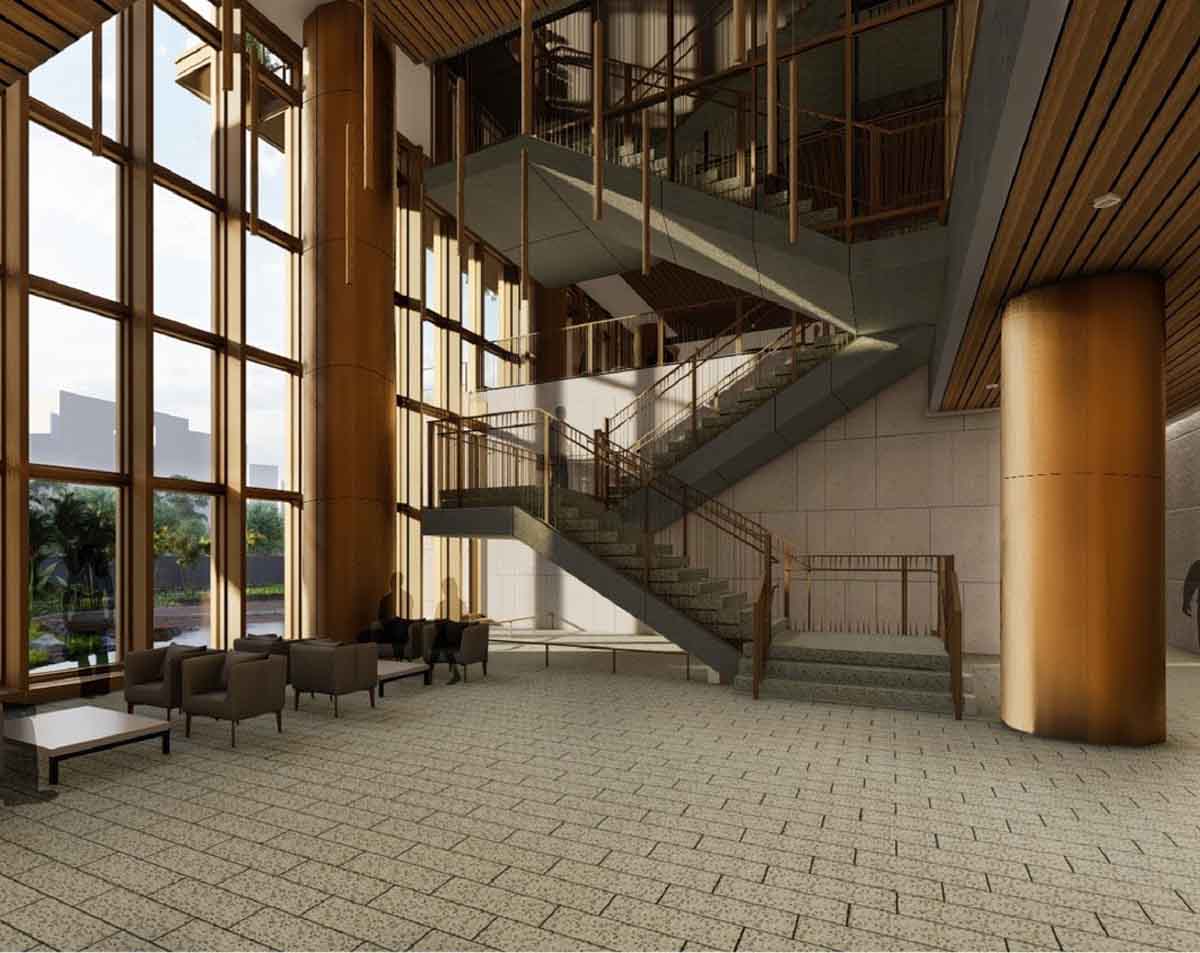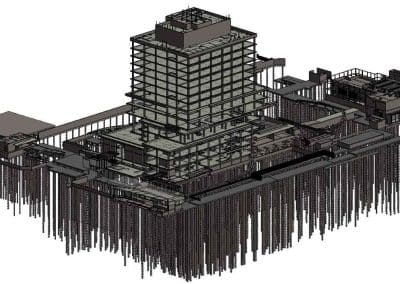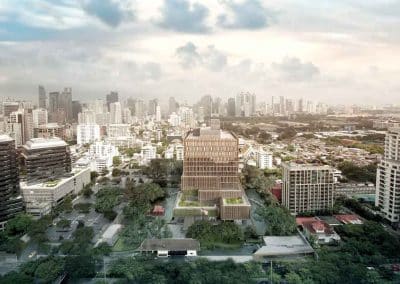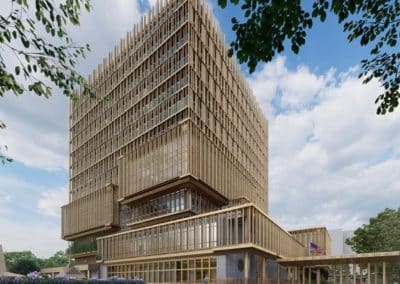U.S. Embassy New Office Annex
Bangkok, Thailand
Sustainability
– LEED Silver
Project Type
– Civic/ Government
– International
– Office
Services
– New Construction
– Progressive Collapse Analysis
The New Embassy Compound in central Bangkok consists of multiple buildings on a swampy site, including a 15-story, 250-foot office tower with 215-foot deep piles designed to resist blast loading and progressive collapse.
The Project
The New Embassy Compound in Bangkok, Thailand consists of a 15 story new office building (NOX), a 5 story marine security guard residence hall (MSGR), a 3 story utility building with elevated storage (UTL), and two main entry pavilions (CACs), as well as multiple site canopies and pedestrian bridges. The NOX is the central focus of the site and features a glass façade with an exterior sunshade and multiple green roofs as the tower’s footprint reduces with each story. Multiple sets of “floating” concrete monumental stairs are found within the lower levels of the building. The facility houses American and Thai employees and troops as well as serves as the main consular visa processing center for southern Thailand.
Ehlert Bryan serves as the Structural Engineer of Record for all buildings on the site. Each separate building was designed to Overseas Building Operations (OBO) structural design criteria, which contains unique and stringent loading criteria for embassy structures. In addition, the buildings were designed to Seismic Design Category D (SDC D) per the US building codes. Ehlert Bryan coordinated the structural design of the buildings with the blast consultant (Walter P. Moore), the curtain wall manufacturer (PWS International), the civil engineer (Cowen Design Group), and geotechnical consultant (Schnabel Engineering).
Structural Features
The NOX tower is a dual-system of reinforced concrete core shear walls and special reinforced concrete beam and column moment frames. The other buildings on the site are concrete bearing wall systems, and the site canopies are steel-framed cantilevered column structures.
A Sinking City
The city of Bangkok sinks by about 1 inch per year. Due to this, soils at the site are very weak and unreliable. Deep foundations were required to support the buildings on stable ground. Even walkways and single-story canopies on the site had to be supported by drilled pile foundations. The piles directly underneath the NOX concrete shear wall core are nearly 6-feet in diameter and were drilled over 215-feet into the ground.
Seismic Design
Bangkok is not in a particularly high seismic region, but the weak soil pushed the seismic design of the buildings into one of the highest design categories, SDC D. Sufficient ductility in structural performance at the NOX tower was ensured by utilizing a combination of 32” concrete shear walls with special boundary elements and concrete moment frames.
Offset Columns
One of the key architectural features of the NOX tower is to have all the column faces equally spaced from the glass façade. This led to multiple locations where column centerlines did not align floor-to-floor, thus creating difficult column detailing through the joints. In additional, column shapes often changed from square to circular or vice versa from floor to floor. Ehlert Bryan created unique column joint details for all scenarios to assist the contractor in preparation of shop drawings.
Progressive Collapse
As with all US embassies that consist of a building 3-stories tall or more, the NOX tower was designed for progressive collapse, which provides enhanced structural resilience and ductility for life safety in the event of loss of a load-bearing element, such as a column or wall. This was especially difficult at the offset columns and led to significantly thick concrete beams to provide progressive collapse resistance.




